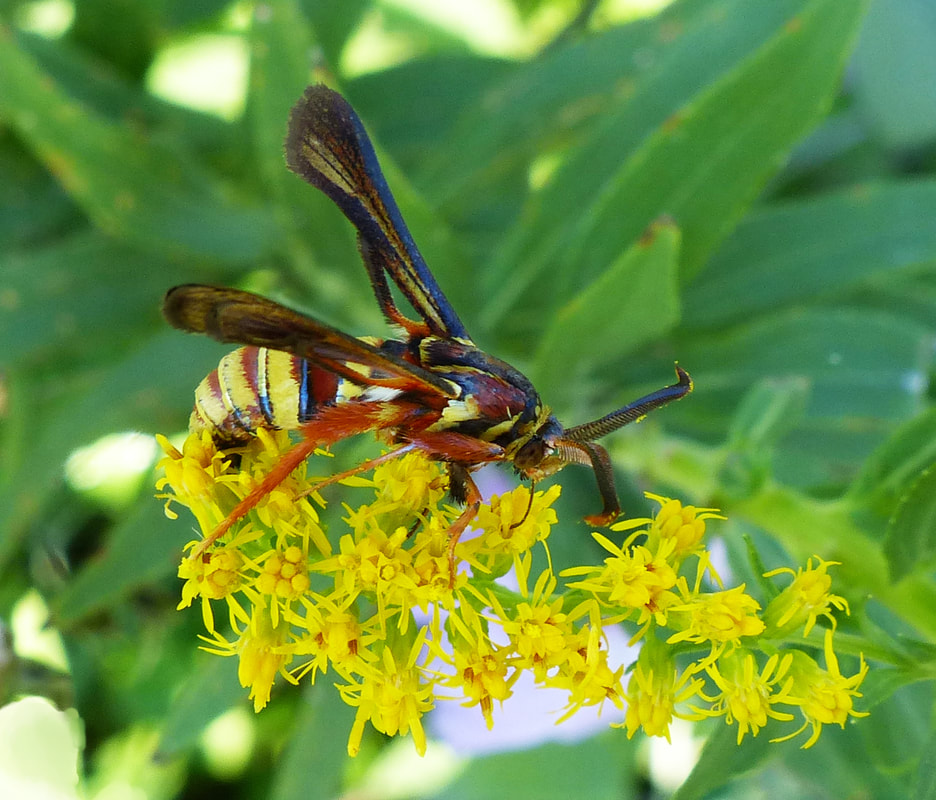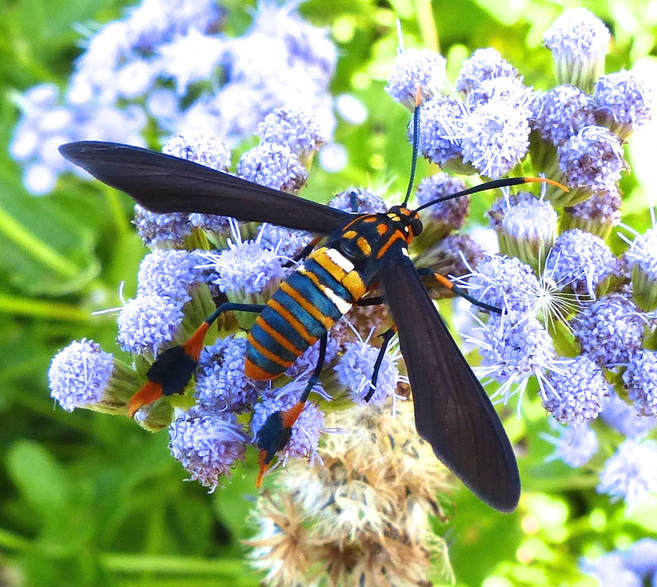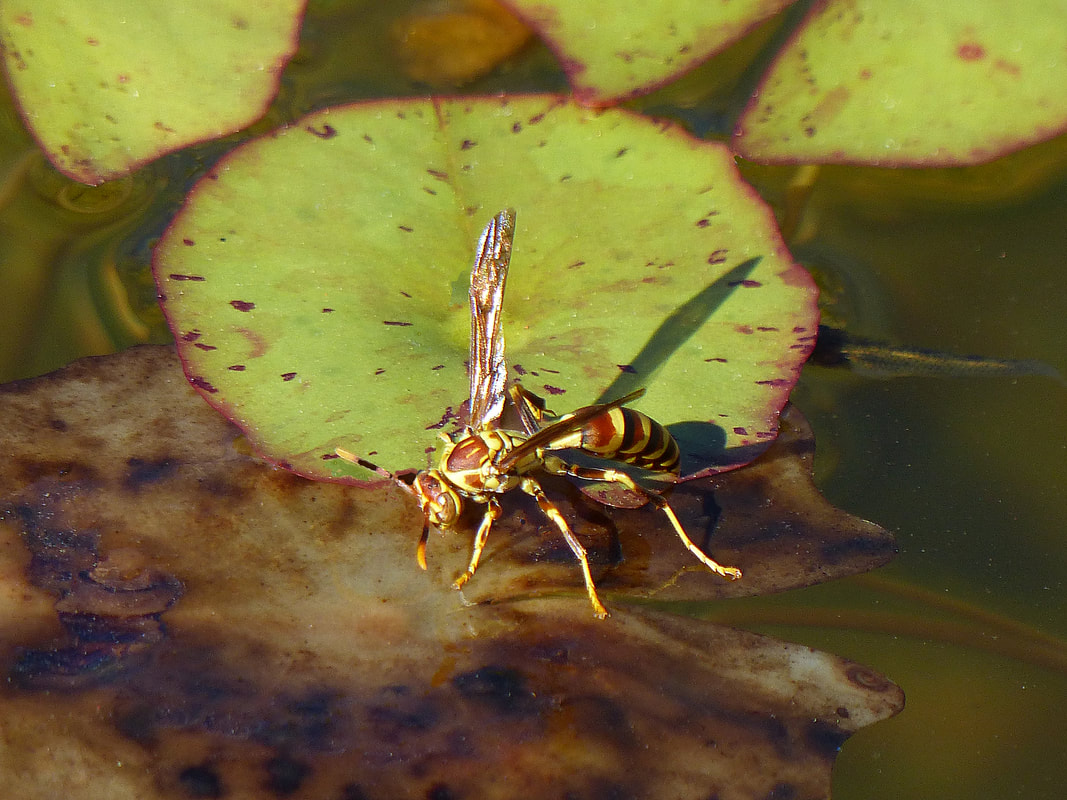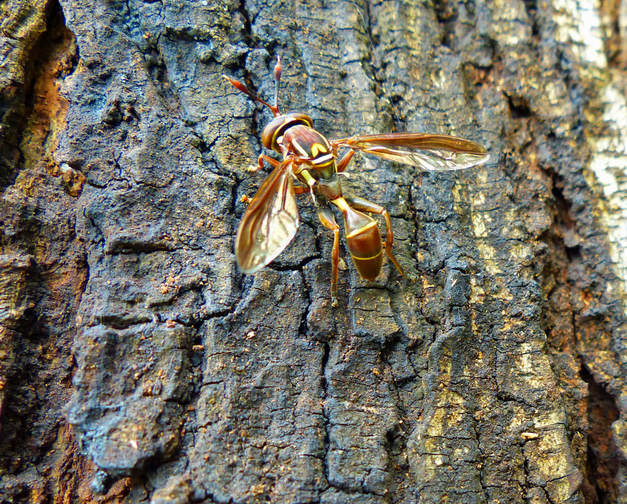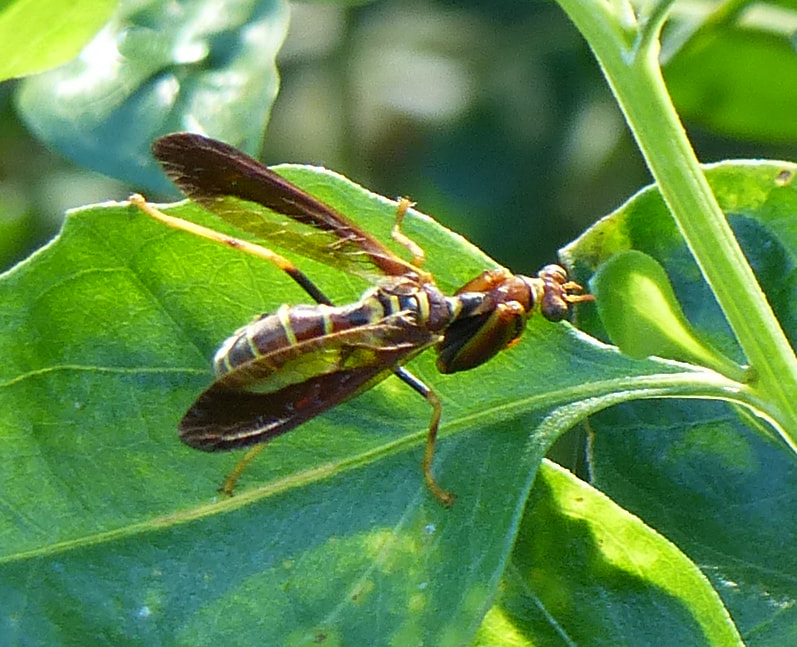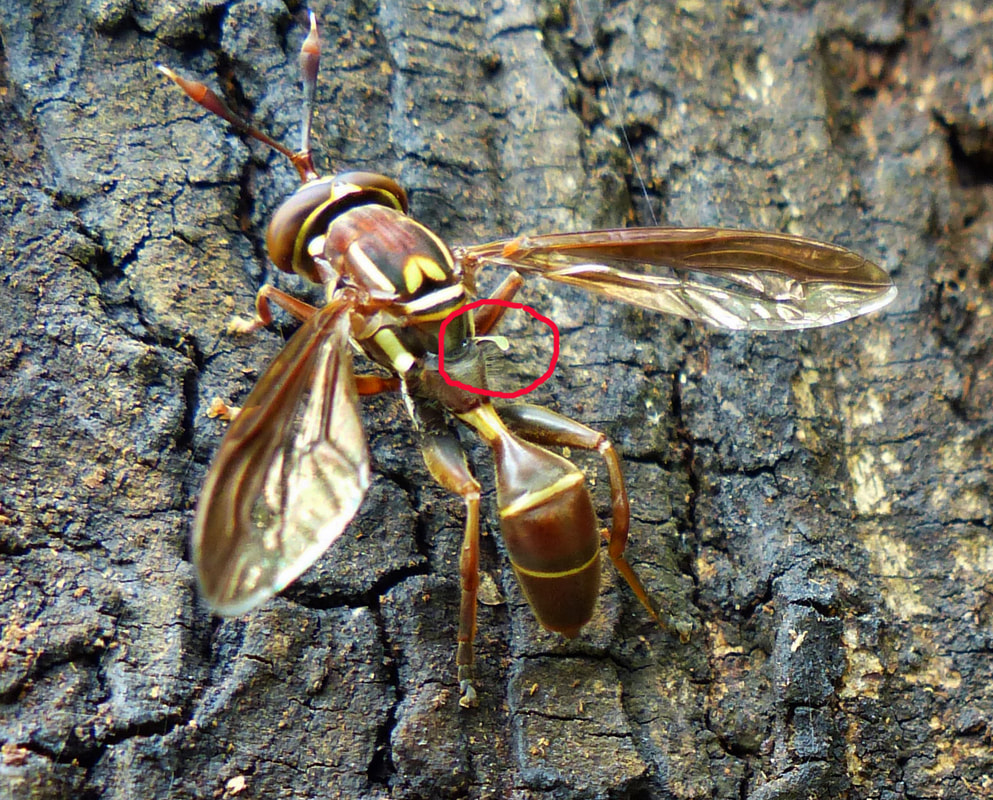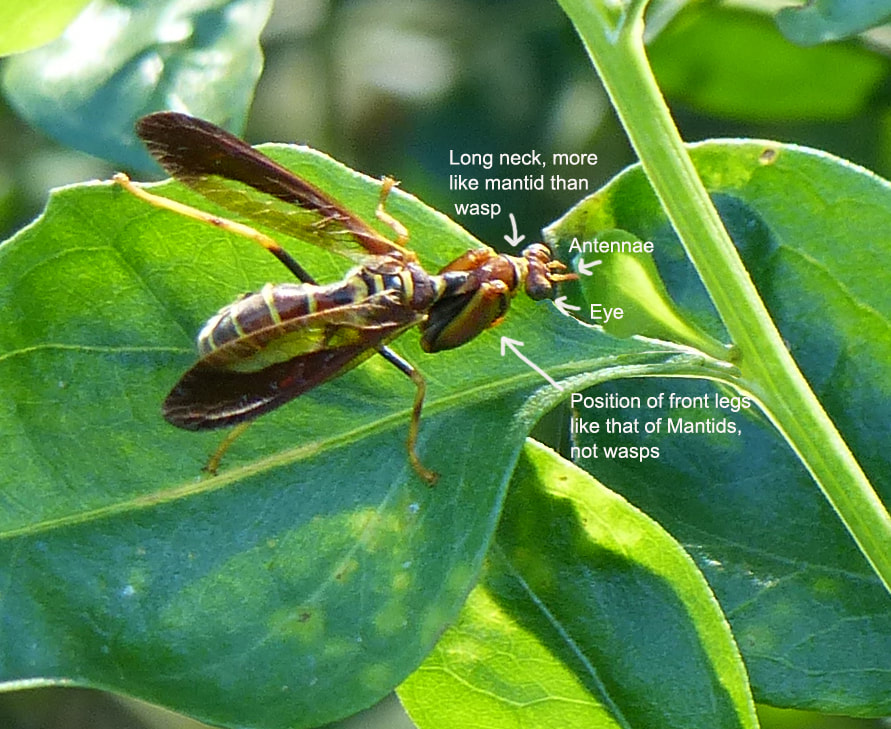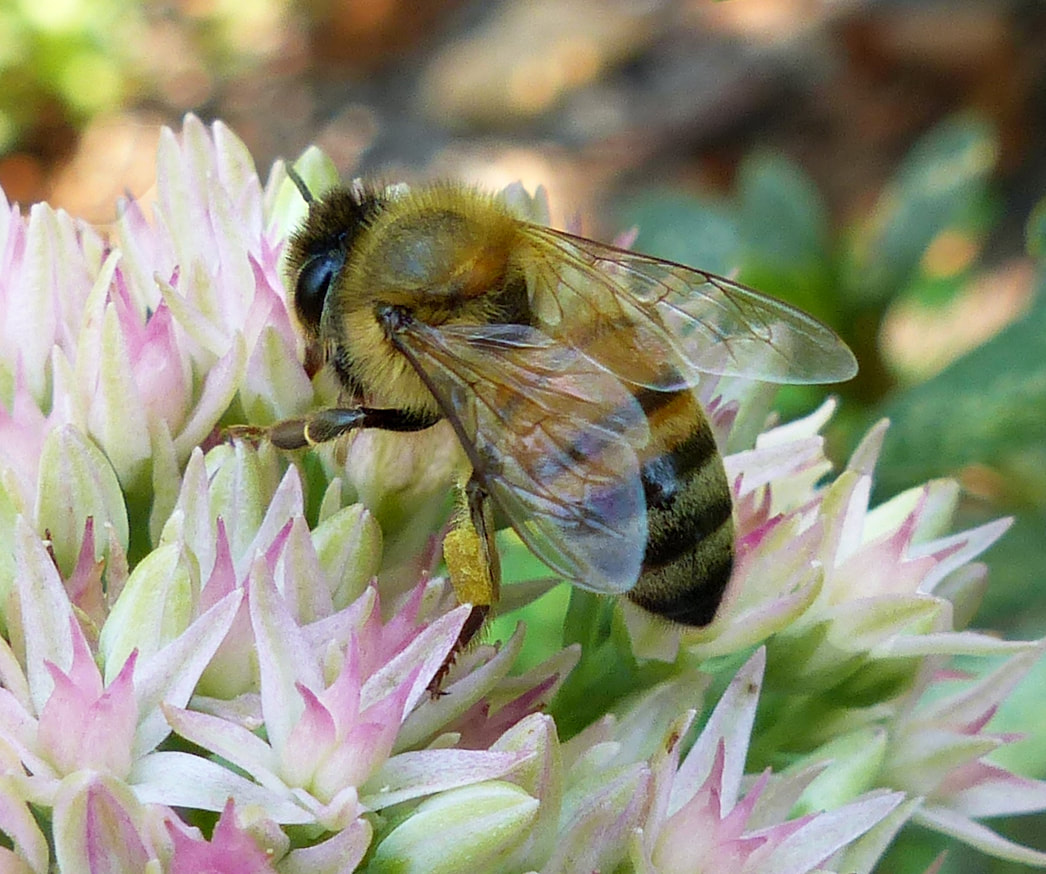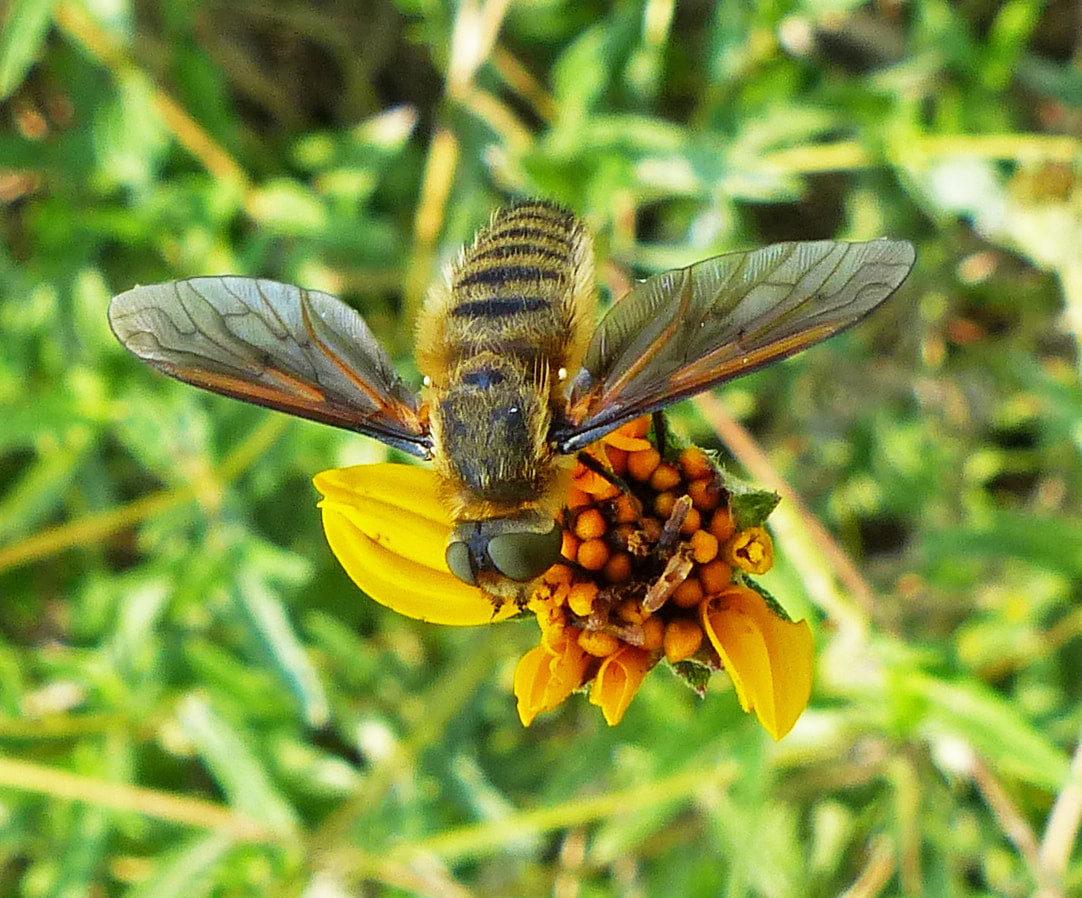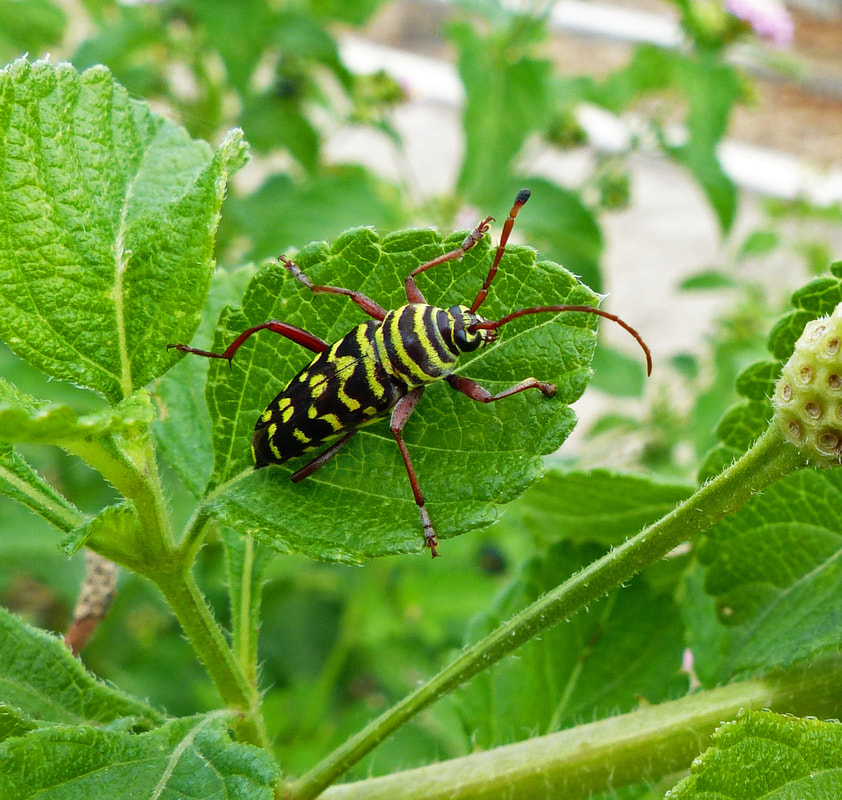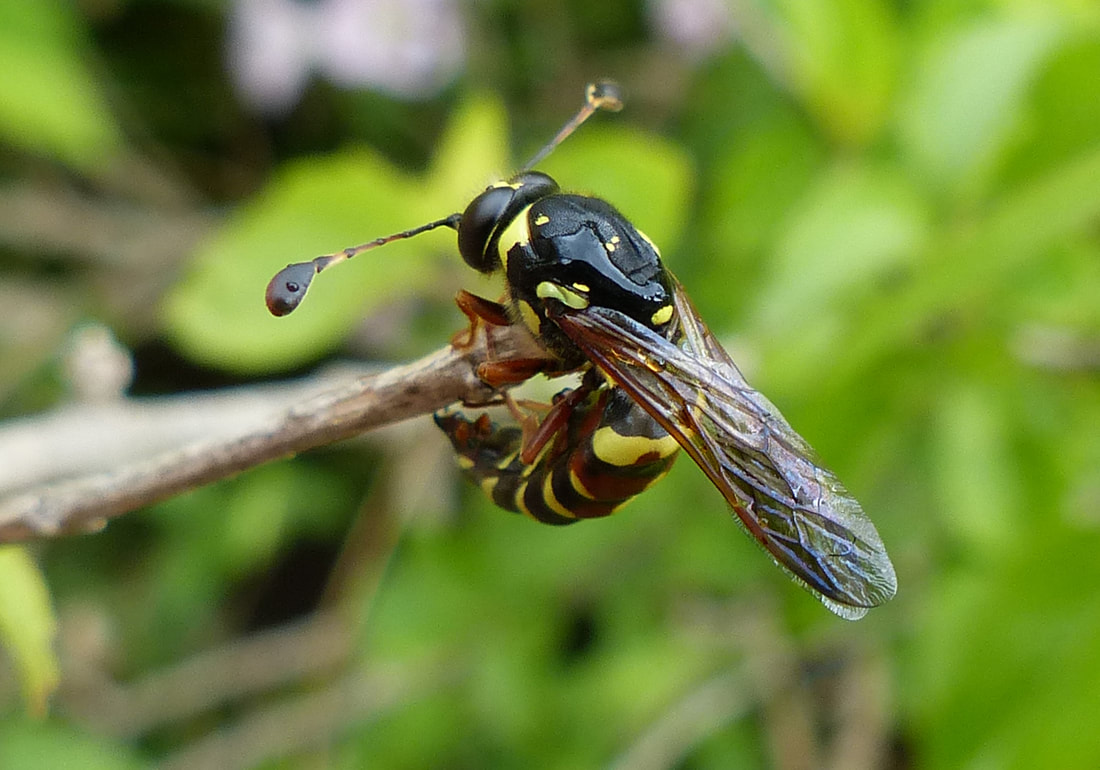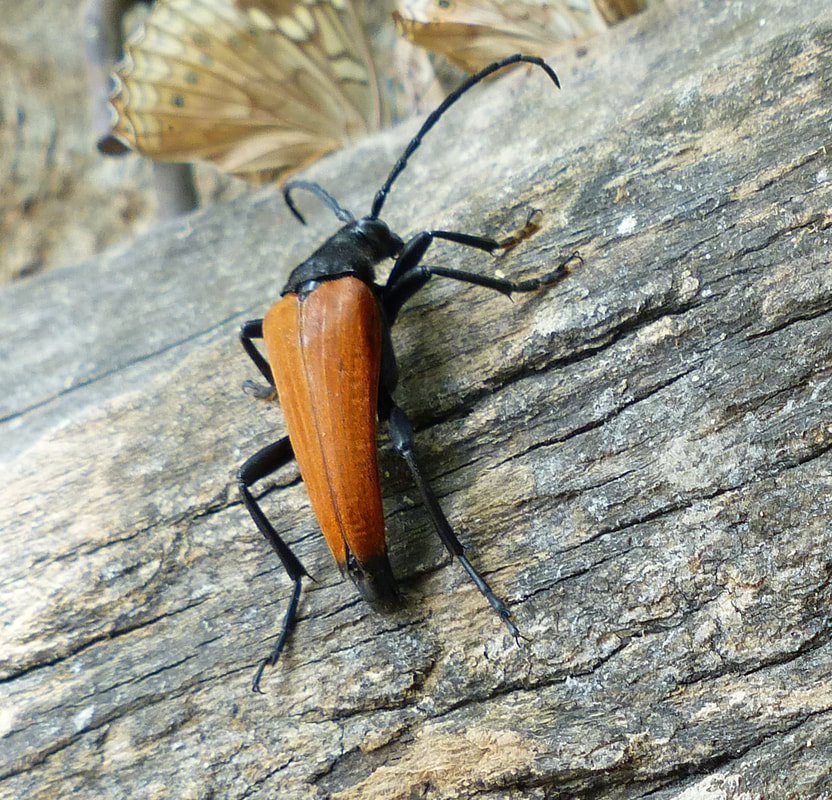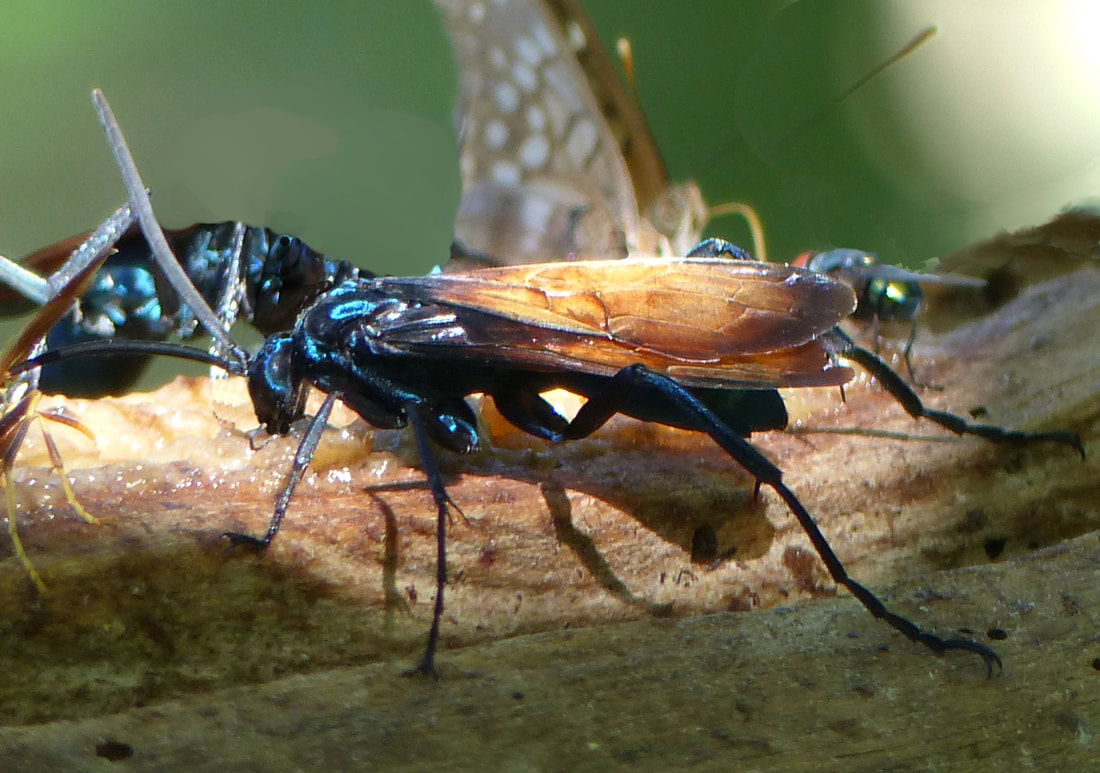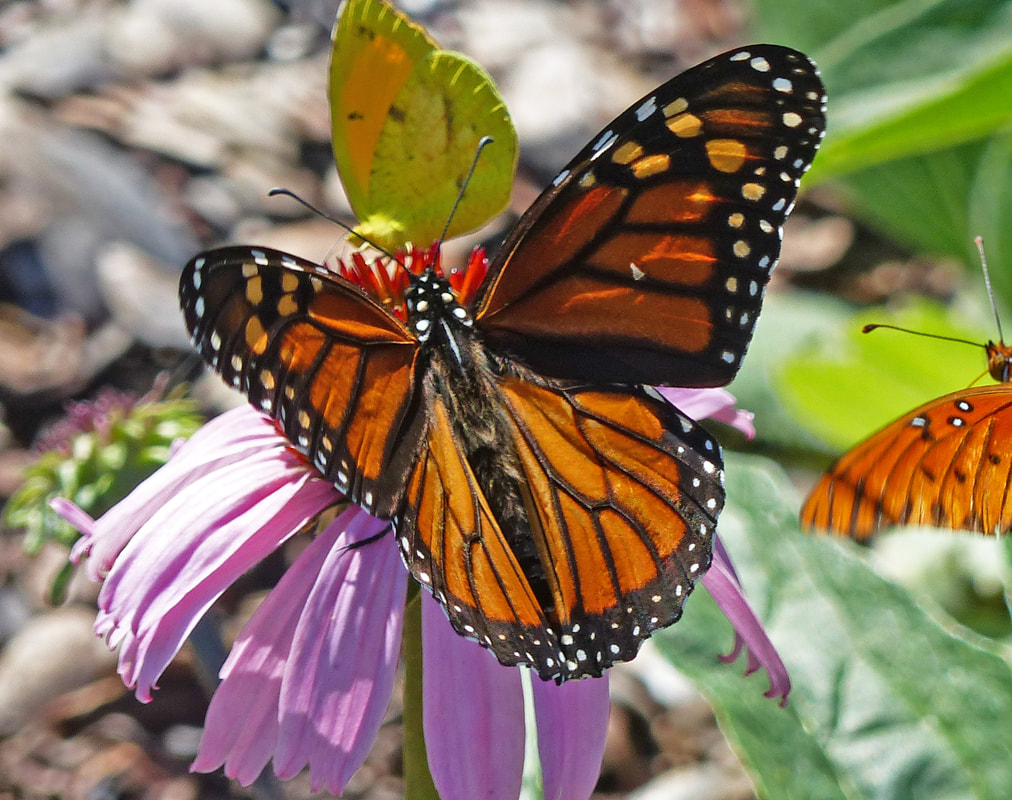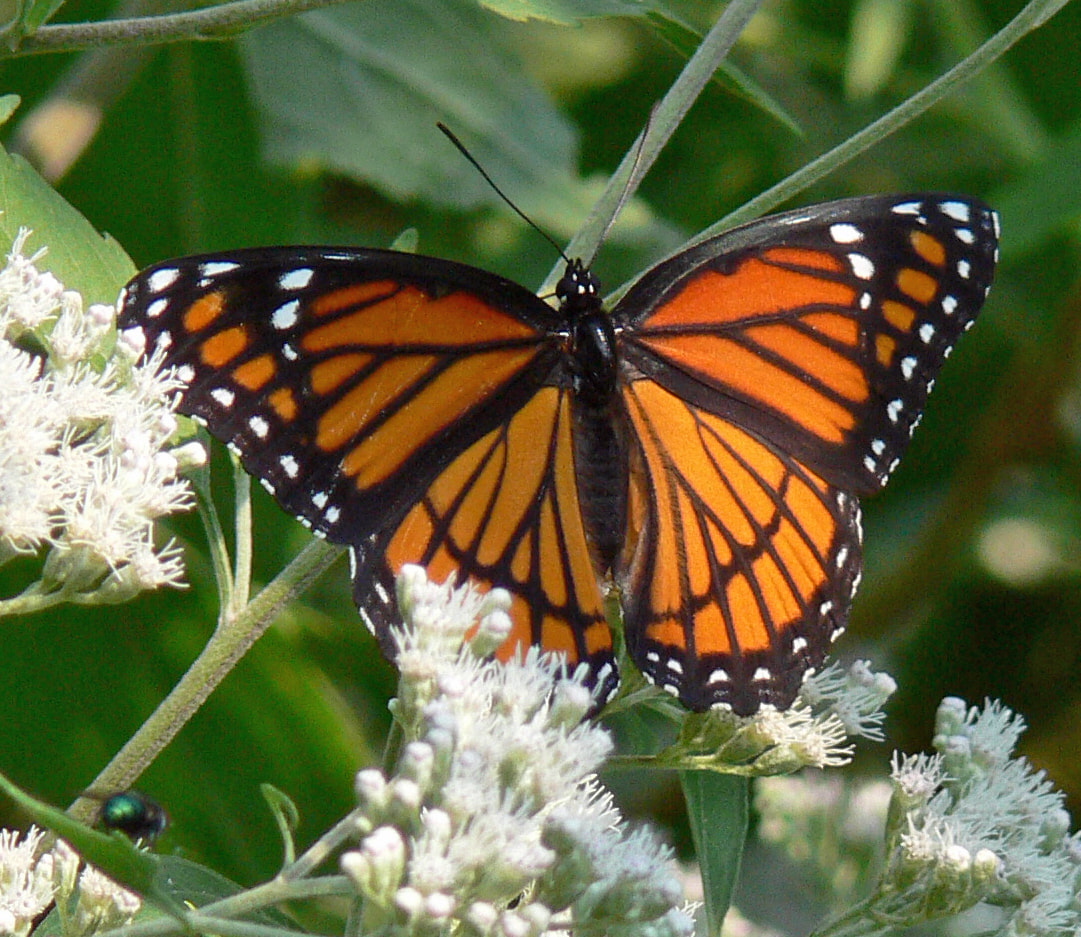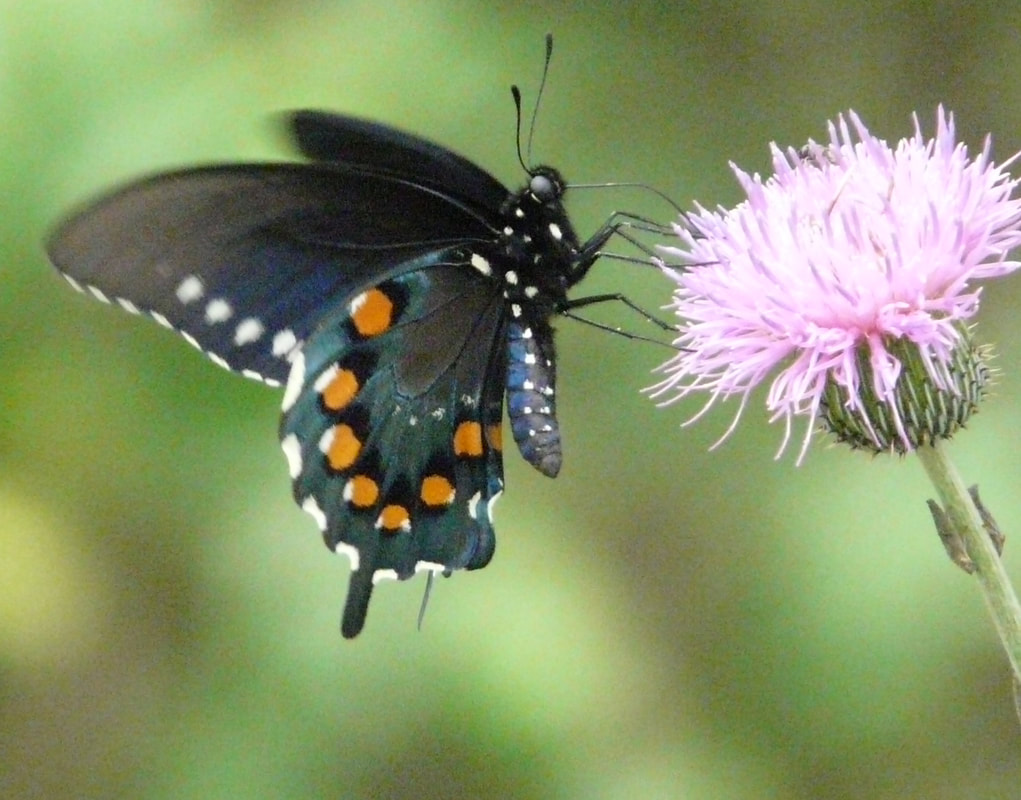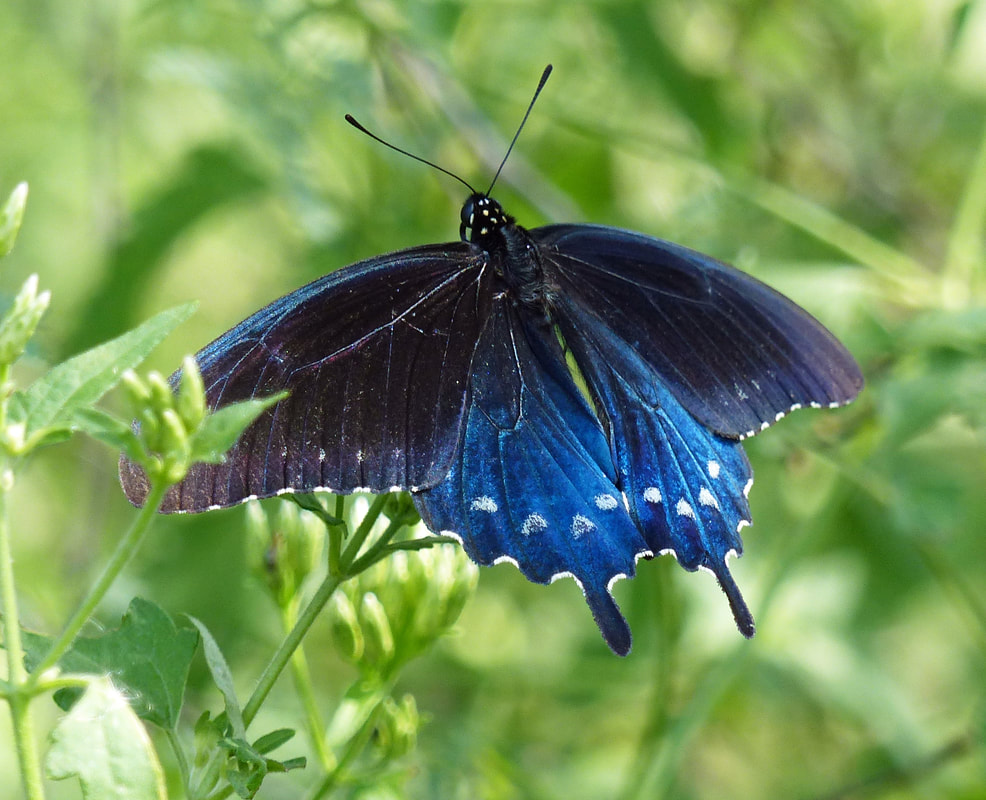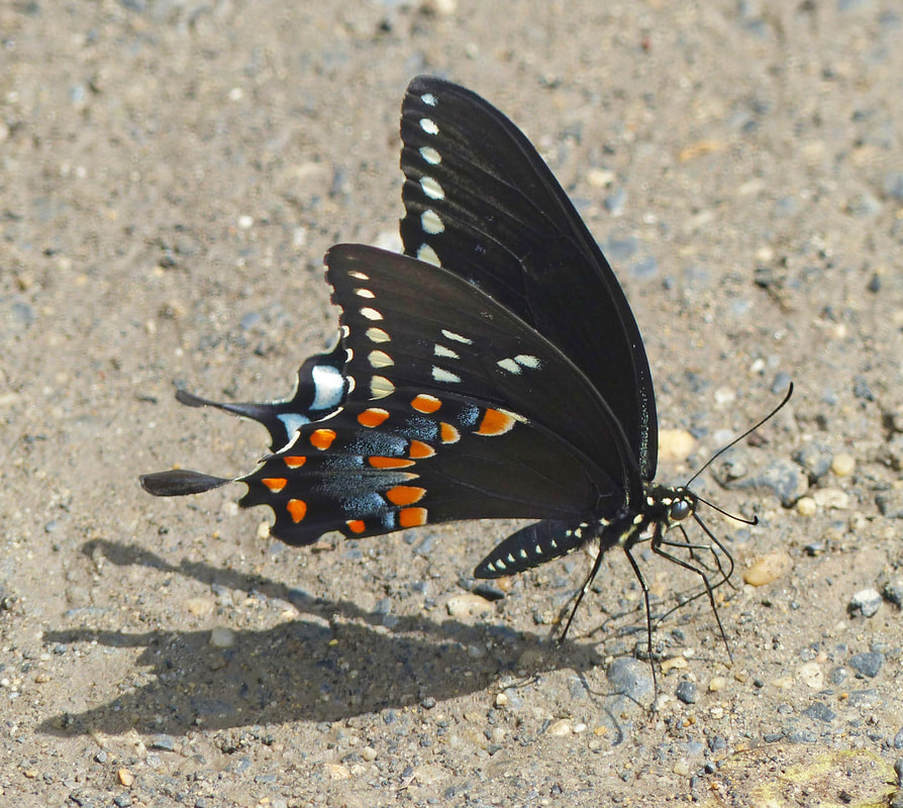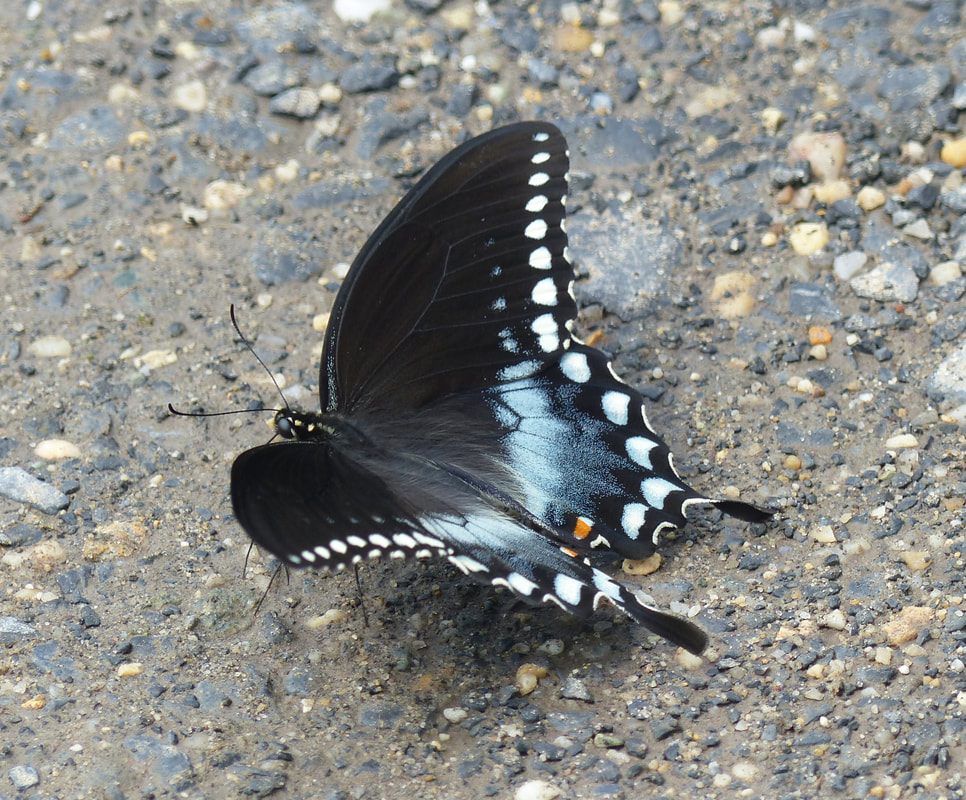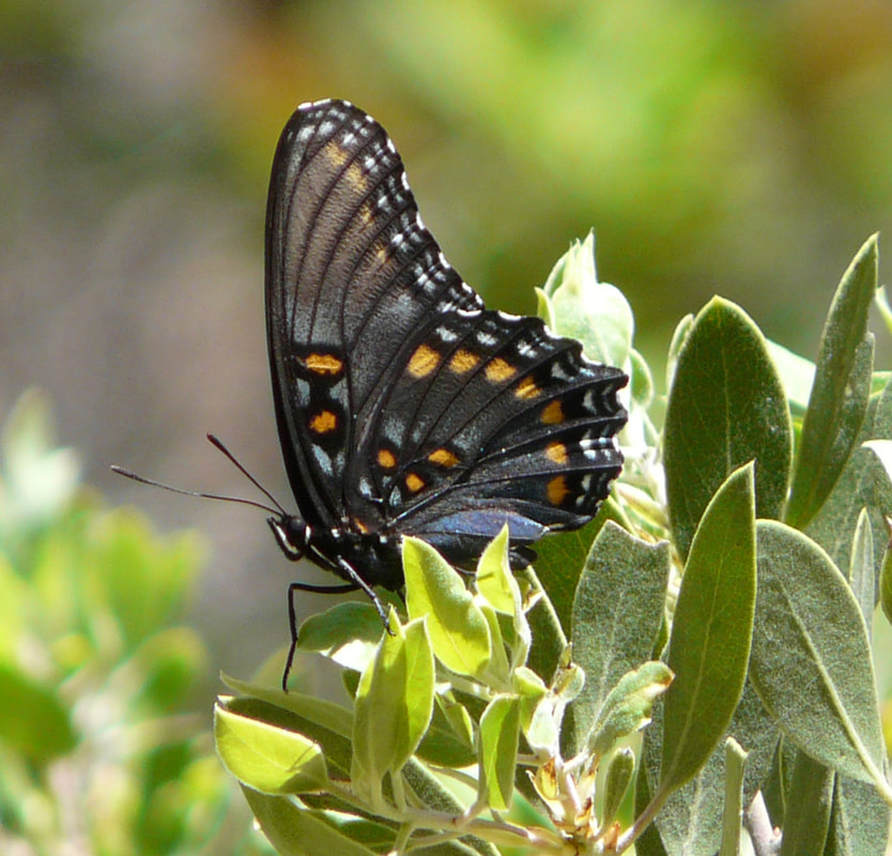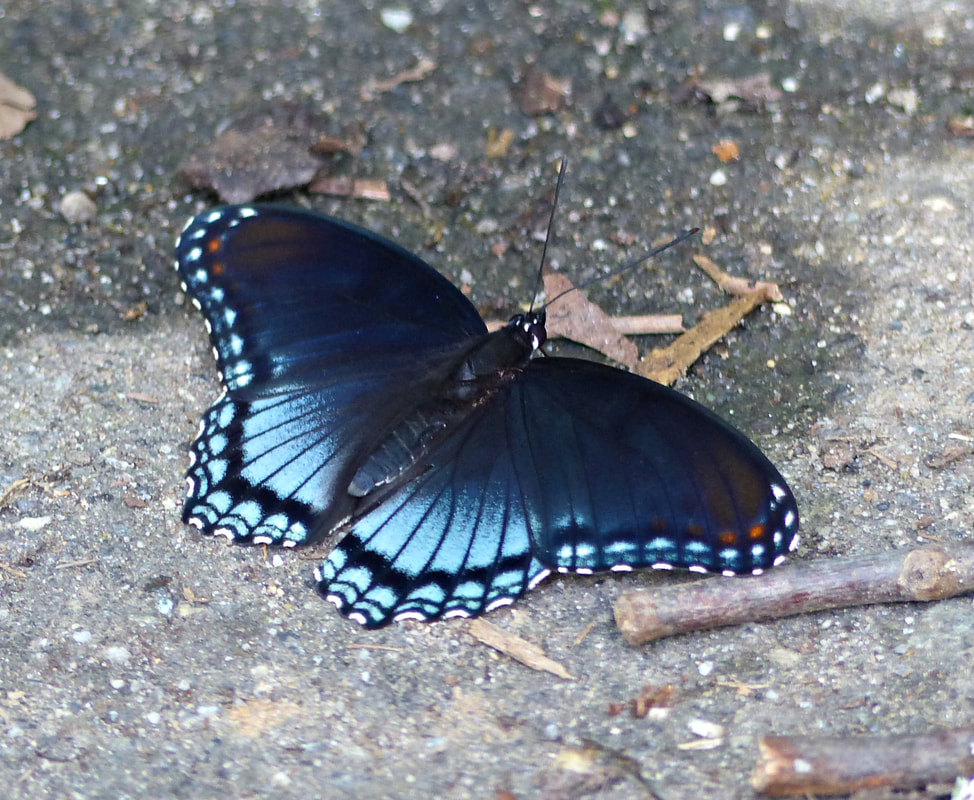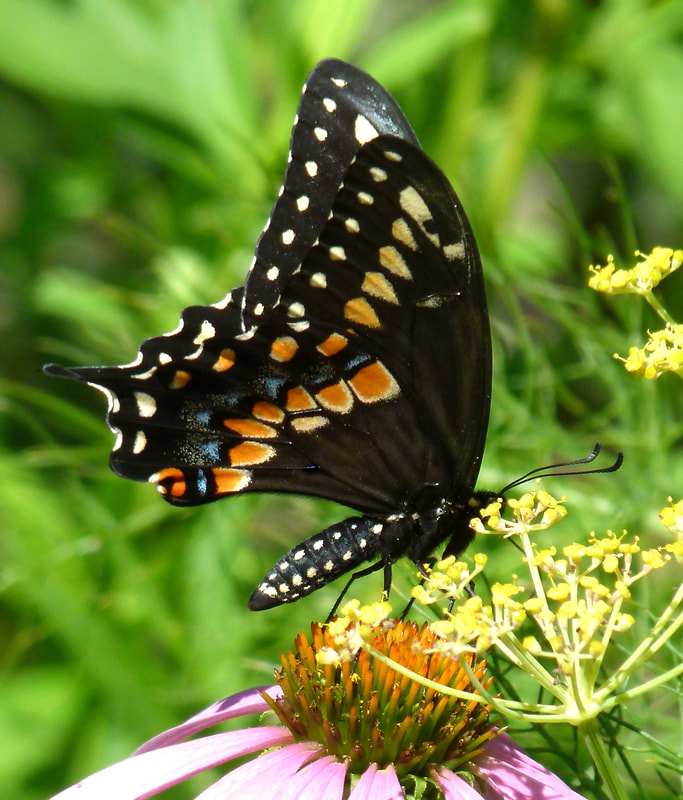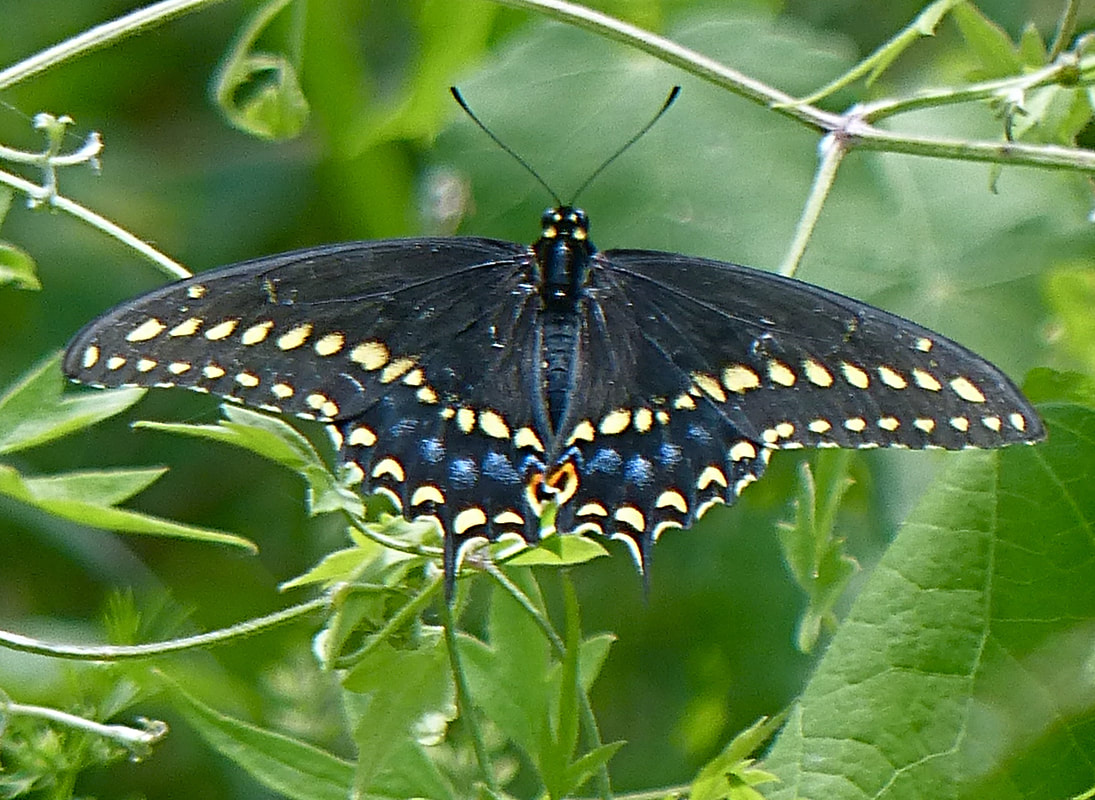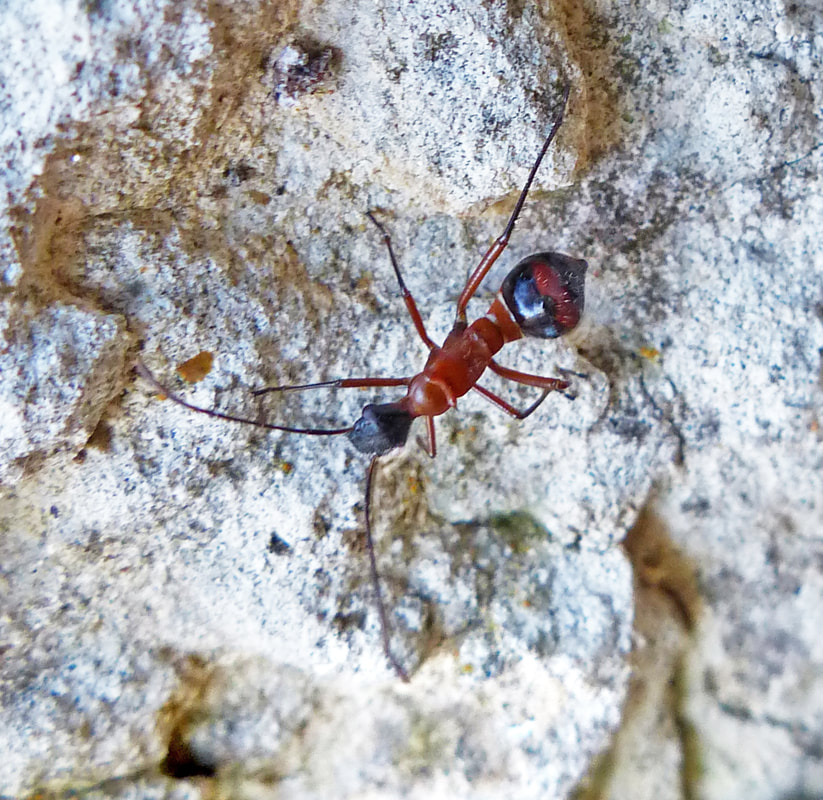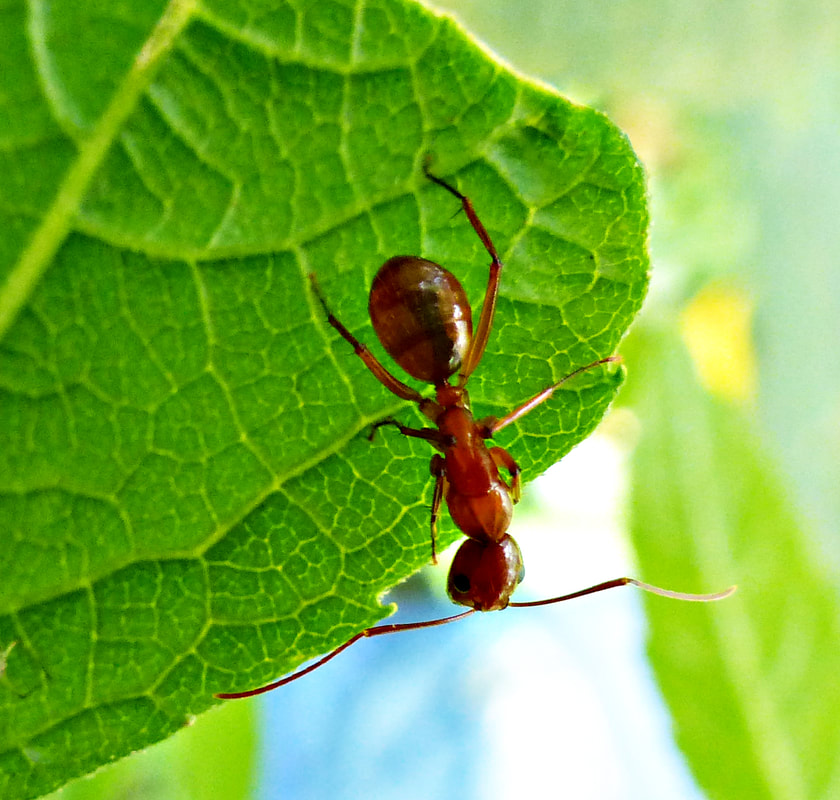MIMICRY
Many totally harmless insects derive protection because they look like insects that sting or bite. Others look like insects that taste bad or are poisonous and thus are also left alone. This defensive mechanism is called MIMICRY and is very effective in keeping animals safe.
MIMICS OF INSECTS THAT STING OR BITE
As you can see in the WARNING COLORS section of Insect Defense, insects with bold stripes or bright colors are announcing to predators that it isn’t even worth trying to eat them. They will either defend themselves by stinging or biting or taste bad. Mimicking these dangerous insects is an effective defensive device.
In the following section, try to figure out which insects are dangerous and which are mimics. Think of yourself as an insect predator. See if you are fooled.
Click on a photo to make it larger.
Wasps?
Which of the three "wasps" below is a Paper Wasp?
Wasp
The insect drinking in the first of the three photos is the only wasp.
The insect drinking in the first of the three photos is the only wasp.
Fly
Mantidspid
I first saw a MANTISPID on a bush in Florida. I thought it was a wasp, but a very strange-looking wasp. Upon closer inspection, I saw that the front legs were all wrong and the head seemed to be above the body. Where did the neck come from? Wasps don't have necks. Of course, it wasn't a wasp. This wasp mimic is a member of the Mantispidae family.
Honey Bee or Bee Fly?
Wasp or Beetle?
MIMICS OF INSECTS THAT ARE DISTASTEFUL OR POISONOUS
In the WARNING COLORS section, you saw a variety of colorful insects that eat plants containing poisons, store the toxins in their bodies, and become poisonous or distasteful themselves. Predators learn to associate their bright colors with bad tastes or even harmful physical reactions and learn to stay away from them.
There is a whole group of insects that are perfectly palatable, but look just like or mimic those insects that are distasteful. As with mimics of stinging or biting insects, these insects also derive protection from looking like insects to avoid.
There is a whole group of insects that are perfectly palatable, but look just like or mimic those insects that are distasteful. As with mimics of stinging or biting insects, these insects also derive protection from looking like insects to avoid.
Which Butterflies Should Predators Avoid?
Monarchs
Monarchs feed on milkweed, which contains chemicals that are toxic to some animals. Both the larvae and adults eat milkweed, sequester the toxins in their bodies, and become toxic to predators. Their bright orange and black coloring is a warning to any animal that is considering making them a meal.
Viceroy Butterflies are convincing mimics of Monarchs. They derive protection from being mistaken for Monarchs.
Even in still photographs, the two brightly-colored butterflies pictured below look like the same insect. The butterfly on the left is an unpalatable Monarch. The one on the right is a Viceroy, a very successful mimic. Imagine if the butterflies were flitting around. Would a predator be fooled? Were you?!
Viceroy Butterflies are convincing mimics of Monarchs. They derive protection from being mistaken for Monarchs.
Even in still photographs, the two brightly-colored butterflies pictured below look like the same insect. The butterfly on the left is an unpalatable Monarch. The one on the right is a Viceroy, a very successful mimic. Imagine if the butterflies were flitting around. Would a predator be fooled? Were you?!
Pipevine Swallowtail Butterfly
Pipevine Swallowtail Butterfly caterpillars eat pipevine, also known as Dutchman's pipe, which is very toxic. The caterpillars store the plant's poisons in their bodies so when they become adults -- butterflies -- they are toxic to predators -- mainly birds.
Are the butterflies pictured below Pipevine Swallowtails?
MIMIC OF AN INSECT THAT BITES, STINGS, AND TASTES BAD
MIMIC OF AN INSECT THAT BITES, STINGS, AND TASTES BAD
Ants are a member of the Hymenoptera order, which includes wasps, bees, and ants. Ants sting, bite, and contain bitter formic acid. They appeal to few predators. Mimics of ants are many -- among them are beetles, flies, spiders, and true bugs.
Two Ants?
The insect on the left is a BUG NYMPH - A Texas Bow-legged Bug (Hyalymenus tarsatus) nymph. The insect on the right is an ant. Incredible mimicry!!!
